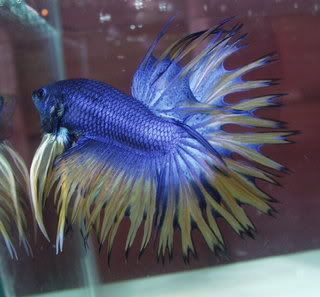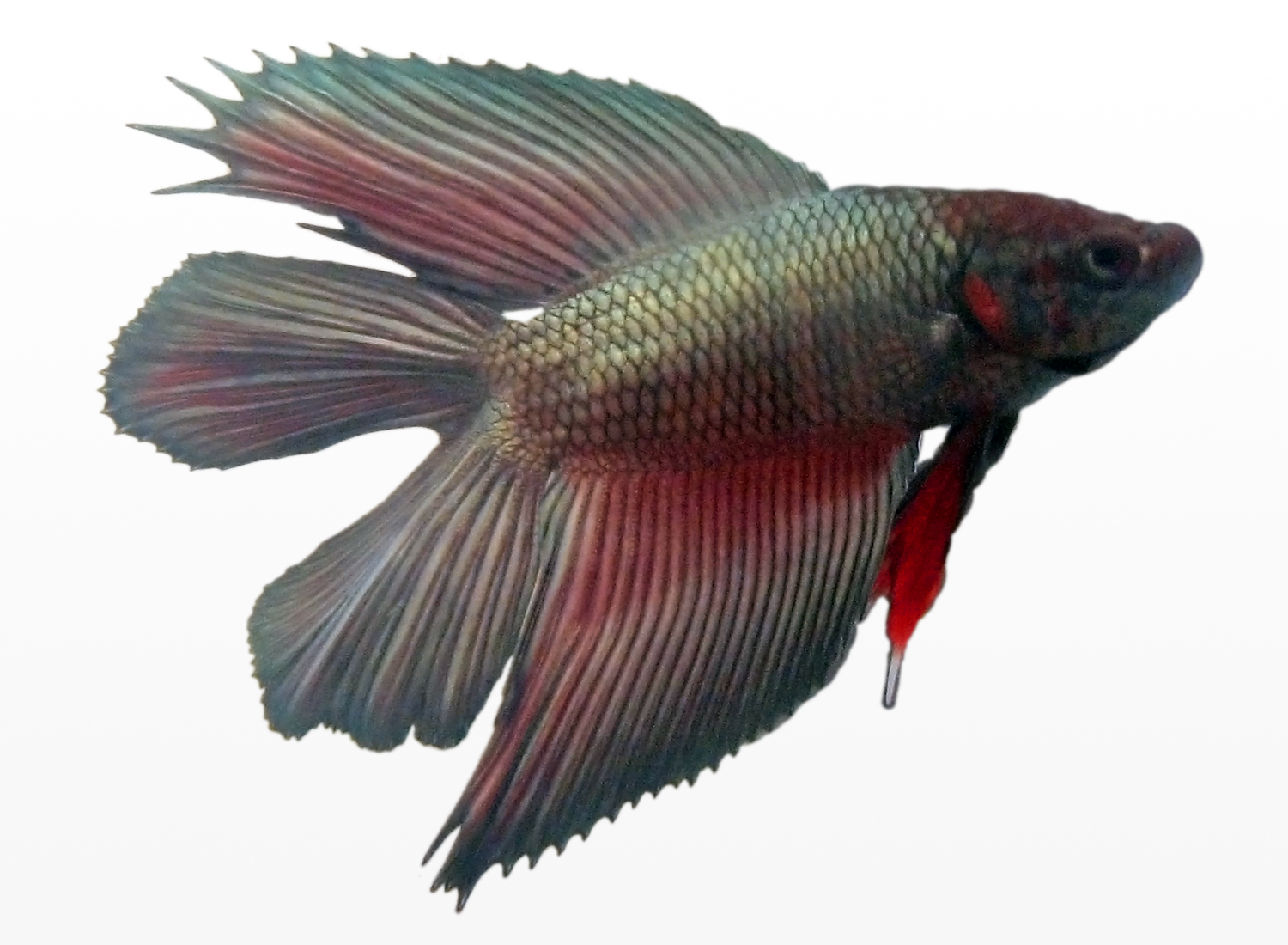Clown Fish

What Is A ClownFish?
The clownfish is a type of fish that lives in salt water habitats. It is also called an Anemonefish. Clownfish are typically very bright, orange fish that have three white stripes, one at the head, middle and tail. If you look really closely, you may notice that there are thin black lines around the white stripes. Also, the tips of their fins have a thin black rounded stripe.
Clownfish live in a "symbiotic" relationship with certain anemones. This means they benefit from living with the sea anemone, and the sea anemone benefits from the presence of the clownfish. They are the only fish that are able to live in sea anemones and not get stung by their tentacles. Clownfish are very active fish and are extremely aggressive. Because they are quite active, the clownfish are thought to be "clowning around". They defend their territory and the sea anemone that they live in. Clownfish eat the leftovers from fish on the anemone and algae. The leftovers include copepods, isopods and zooplankton.
Clownfish have a few ocean predators, but their greatest threat is humans. People who catch clownfish and keep them as pets in aquariums are making a mistake. There are only ten out of more than one thousand types of anemone that are able to host these fish. Many people put the fish in a tank with the wrong anemone. In captivity, the clownfish can live from 3 to 5 years. In the wild, they live 6 to 10 years.


Where do Clownfish Live?
Clownfish live at the bottom of the sea in sheltered reefs or in shallow lagoons, usually in pairs. Clownfish have a special relationship with the anemone and are very important to them. They are a large help to the anemone as they clean the anemone by eating the algae and other food leftovers on them. They also protect the sea anemones by chasing away polyp-eating fish, such as the butterfly fish.
The map below shows where in the world clownfish can be found. They live in the warmer waters of the Pacific Ocean and Indian Ocean. They are also found in northwest Australia, southeast Asia, Japan and the Indo-Malaysian region. There are no clownfish in the Caribbean.
What are Some Special Characteristics of the Clownfish?
In a group of clownfish, there is a strict hierarchy of dominance. The largest and most aggressive female is found at the top. Only two clownfish, a male and a female, in a group reproduce through external fertilization. The clownfish are hermaphrodites, meaning that they develop into males first, and when they mature, they become females. Also, as mentioned earlier, more than one clownfish is able to live in a sea anemone. If the female clownfish is removed from the group, such as by death, one of the largest and most dominant males would become a female. The rest of the remaining males will move up a rank on the hierarchy.
The Siamese Fighting/Betta splendens


For hundred of years, the Siamese Fighting Fish or Betta splendens, has been kept and cultivated by people in Thailand (Siam). Today, the Betta is popular throughout the world – though not for the purpose of fish fighting but as a peaceful aquarium resident. Through years of selective breeding, pet store Bettas look vastly different from their original, wild-caught ancestors. Instead of just a few colors, they can now be purchased in an array of hues including red, blue, turquoise, black, white, yellow, and brown.
In addition, their fins have greatly increased in size and are much more elaborate; among the different types of hybrids available are the Veil Tail, Delta Tail, Half Moon, Double Tail, and Crown Tail. Of course, it is only the males that have the long, elegant fins and do all the fighting. Females have much shorter fins and are not as vividly colored as the males. Interestingly, Bettas are air breathers; they use a unique organ called the labyrinth to process the oxygen in the air and they will die if they are unable to reach the waters surface.
The Betta’s native habitat is the warm, still ponds, swamps and rice paddies of Southeast Asia. There, among the leaves and branches of the dense undergrowth, these carnivorous fish hunt for small insects and larvae.
Although the Bettas found in pet stores today have been captive bred, they should be kept in conditions that mimic their ancestor’s natural environment. Therefore, an aquarium (minimum size of 10 gallons) that is decorated with several plants and that has gentle water movement will suit them best. A cover, with a few small openings to allow air circulation, should also be provided to prevent them from jumping out.
Bettas like warmer temperatures so the water in the aquarium should be kept between 76-85 F with a slightly acidic pH of 6.5-7.0. Their diet should consist primarily of meaty foods such as brine shrimp, bloodworms, freeze-dried tubifex worms, etc. Bettas can grow to 3 inches long and live for up to 3 years if cared for properly. As far as tank mates are concerned, Bettas get along fine with most fishes; but do not keep them with aggressive species or any that are prone to pick at their beautiful fins. Male Bettas can be kept together in the same tank only if they are partitioned off from each other – otherwise you can expect some shredded fins, missing scales and not-so-nice looking fish!
Goldfish

First, goldfish tend to thrive at sub-tropical temperatures, which means about 68 to 72 degrees Fahrenheit. This is not to say that 75-degree water will kill the goldfish. It's just that the lower temperatures are healthier for them. Cooler water holds more oxygen, which larger goldfish require for good health.
Second, goldfish tend to be much more massive than tropical fish. As they grow, they can easily eat more than the tropicals. The latter may end up suffering from malnutrition. At the same time, goldfish also produce far more waste products than the typical tropical fish. Some tropical species require very clean water and goldfish will make this rather difficult to maintain.
Third, temperate water fish (such as goldfish) and tropicals tend to carry different diseases and parasites and tend to be resistant to their specific diseases and parasites. Thus, the mixing of the two can expose each to health problems they are not at all capable of coping with. 

The fact is that many species of fish often seem to get along well when they are young. As they mature, however, trouble can start. You might not notice problems immediately because aggressive or predatory behavior may occur at night. For example, your Chinese algae eater becomes both large and aggressive as it grows and could eventually spell serious trouble for your goldfish. Your first clue might be a dead fish, or two.


thanks that was helpful
ReplyDelete